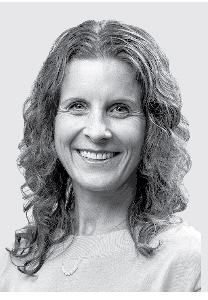Welcome to the first of five “Cultivating Self-Care” columns designed to provide readers with health and well-being support. Overseen by Bernadette Mazurek Melnyk, a nationally recognized expert and speaker on health and well-being, we hope this column is helpful.
There is an epidemic of burnout in the health care workforce.1-3 Health care professionals have higher rates of burnout, mental health problems, and suicide than the general public.4-6 In a recent study our team conducted of optometrists across the country, approximately 1 in 3 reported symptoms of burnout. Does this resonate with you?
Here, we discuss why self-care should be a priority, and how to start.
Why
Taking great self-care and building resiliency can protect against developing chronic diseases, including mental health issues.7-9 Approximately 80% of chronic diseases, such as high blood pressure and diabetes, are preventable with just a few healthy lifestyle behaviors.
How
It’s time for self-reflection: How are you doing with prioritizing your self-care? Do you make the time to regularly engage in activities that are meaningful and bring you joy? Do you practice 30 minutes of physical activity five days a week, eat five fruits and vegetables day; and limit alcohol intake to no more than one standard drink a day?9,10 Are you a non-smoker?
Do you get seven hours of sleep a night and engage in regular stress-reduction practices, such as taking deep abdominal breaths several times a day and learning to stay in the present moment? Guess what? These activities can reduce the risk of chronic disease too!11,12
Now, pick one of these healthy lifestyle behaviors (with your healthcare provider’s blessing, of course), and make a commitment today to get better at it. Set a goal for the next 30 to 66 days. (It takes, on average, 30 to 66 days to make or break a new health habit.)
For example, if you only engage in physical activity for 15 minutes, three days a week, set a goal to increase it to 20 minutes, three days a week.
Write the goal and place it where you can see it every day, as visual triggers help people to reach their goals. Remember, inch by inch, it is a cinch. Yard by yard, it’s hard.
If you slip and don’t meet your goal one day, that’s OK! Just resume the activity the next day guilt-free!

It’s not just about you
Self-care is not a nicety; it is a necessity! If we don’t take time to prioritize our well-being today, we will need to make time for chronic disease later. Sadly, most people don’t change their behaviors unless a crisis happens, or they experience an emotional reason to change. Take this first step. If you don’t do it for yourself, do it for your loved ones who want you to be around for a long time. You can’t keep pouring from an empty cup. OM
References:
1. Aiken LH, Lasater KB, Sloane DM, et al. Physician and Nurse Well-Being and Preferred Interventions to Address Burnout in Hospital Practice: Factors Associated With Turnover, Outcomes, and Patient Safety. JAMA Health Forum. 2023;4(7):e231809. doi:10.1001/jamahealthforum.2023.1809
2. Kelsey EA, West CP, Cipriano PF, et al. Original research: suicidal ideation and attitudes toward help seeking in U.S. nurses relative to the general working population. Am J Nurs. 2021;121(11):24-36. doi:10.1097/01.NAJ.0000798056.73563.fa
3. Nigam JAS, Barker RM, Cunningham TR, Swanson NG, Chosewood LC. Vital Signs: Health worker-perceived working conditions and symptoms of poor mental health - Quality of Worklife Survey, United States, 2018-2022. MMWR Morb Mortal Wkly Rep. 2023;72(44):1197-1205. doi:10.15585/mmwr.mm7244e1
4. Zimmermann C, Strohmaier S, Herkner H, Niederkrotenthaler T, Schernhammer E. Suicide rates among physicians compared with the general population in studies from 20 countries: gender stratified systematic review and meta-analysis. BMJ. 2024;386:e078964. doi:10.1136/bmj-2023-078964.
5. West CP, Dyrbye LN, Sinsky C, et al. Resilience and burnout among physicians and the general US working population. JAMA Netw Open. 2020;3(7):e209385. doi:10.1001/jamanetworkopen.2020.9385.
6. Babić R, Babić M, Rastović P, et al. Resilience in health and illness. Psychiatr Danub. 2020;32(Suppl 2):226-232.
7. Weitzel EC, Löbner M, Glaesmer H, et al. The Association of Resilience with Mental Health in a Large Population-Based Sample (LIFE-Adult-Study). Int J Environ Res Public Health. 2022;19(23):15944. doi:10.3390/ijerph192315944.
8. Centers for Disease Control and Prevention. Preventing chronic diseases: what you can do now. Accessed October 21, 2024. https://www.cdc.gov/chronic-disease/prevention/index.html
9. Dietary Guidelines for Americans. Guidance on alcoholic beverages in the Dietary Guidelines for Americans. Accessed October 20, 2024. https://www.dietaryguidelines.gov/alcohol/info
10. U.S. Department of Health and Human Services. Sleep: Healthy People 2030. Accessed October 20, 2024. https://odphp.health.gov/healthypeople/objectives-and-data/browse-objectives/sleep
11. Melnyk BM, Gawlik KS, Teal A. 12 Keys to Achieving Optimal Health, Happiness and Well-Being. Wolters Kluwer. Forthcoming 2025.
12. Greeson JM, Chin GR. Mindfulness and physical disease: a concise review.
Curr Opin Psychol. 2019;28:204-210. doi:10.1016/j.copsyc.2018.12.014





